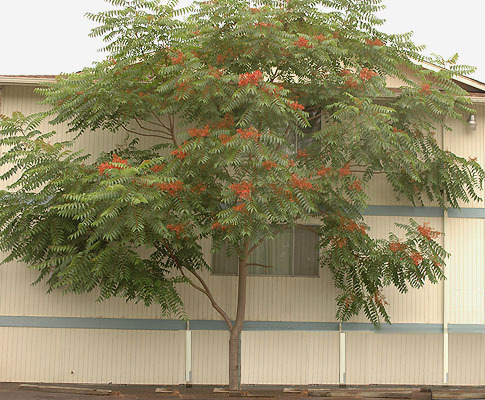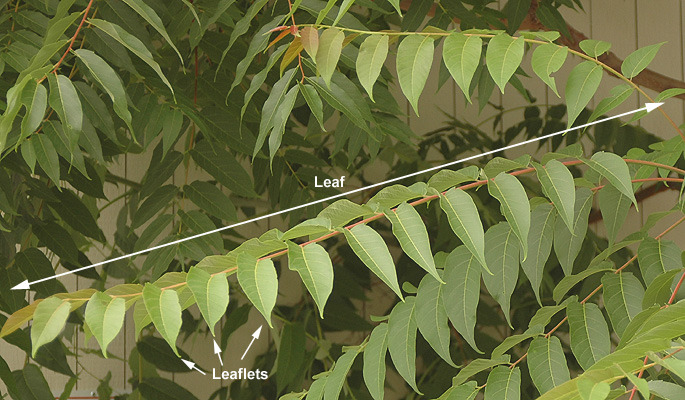Tree of Heaven (Ailanthus altissima) on Jul 16, 2020
Submitter has sample
Description of specimen
Ailanthus altissima is located on the north east corner of Kingwwod DR NW and Bonne Way NW at 842 Kingwood Dr NW Salem, Oregon 97304. The landowner are aware of invasive species Ailanthus altissima and the issues it is causing in the neighborhood. I am tired of trying to red my property of seedling of Ailanthus altissima. I live 0.2 of a mile way from this pest tree. Please, take action and help us in eliminate this invasive species.
Kind regards,
Rudy Yarbruogh
631 Kingwood DR NW
Salem, OR 97304
Reference: https://landscapeplants.oregonstate.edu/plants/ailanthus-altissima



As much as I would like to take action to help you control this invasive species, the Polk SWCD, unfortunately, does not have any jurisdiction or authority to enforce noxious and invasive weed control...I will take this time to shamelessly plug that legislation does exist which could give Polk County/Polk SWCD some teeth in the fight against noxious and invasive weeds via the establishment of a Weed Control District (ORS 569.360), but would require substantial input and petitioning from the public to both our SWCD board, as well as to the county commissioners, etc...while I can't be out in the field actively helping you/the landowner to control or eradicate this Tree-of-Heaven, i can provide you some BMP's as for how to treat it! From what I've been able to gather, the most effective method of control for Tree-of-Heaven is herbicide application. Depending on the size of the tree in question, success has been had utilizing basal area sprays (spraying the entirety of the trunk of the tree from the ground to about 18in up), or using the hack and squirt method, where incisions are made into the bark and herbicide is either injected or sprayed into the cuts...it is important that sections of intact bark are left between the sprayed cuts, as this allows the herbicide to be drawn into the roots...a rule of thumb, is one cut per inch of diameter, with a minimum of two...There are many herbicides that are effective, glyphosate, imazaphyr, triclopyr, but the most successful treatments typically involve glyphosate or triclopyr, and most commonly, are applied mid to late summer (July 1- onset of fall color). Although herbicide applications are less than ideal, they are unfortunately a necessary part of remediation, particularly in this instance, as just cutting the tree would promote stump sprouts and root suckering...2 years of herbicide treatment should have you seeing some significant deterioration, at which point, cutting the tree down becomes much more feasible...a long winded explanation, but hopefully one that helps, please feel free to reach out with anymore questions you might have!
-Jackson Morgan, Polk SWCD
Polk SWCD
July 27, 2020, 4:08 a.m.